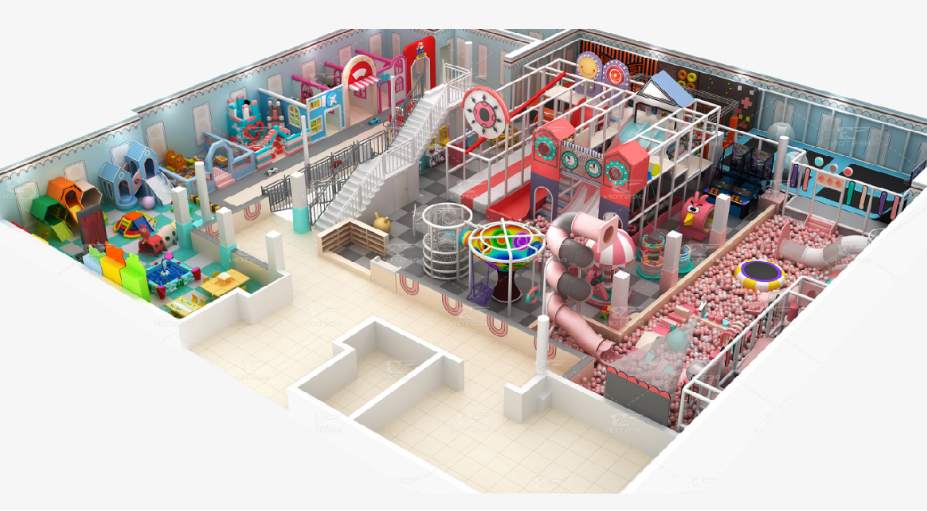Indoor playgrounds are vibrant spaces filled with a variety of equipment designed to provide fun, entertainment, and physical activity for children. The materials used in the construction of indoor playground equipment play a crucial role in ensuring safety, durability, and functionality. In this article, we will explore some of the common materials used in indoor playground equipment, highlighting their properties and benefits.
Steel
Steel is a primary material used in the framework and structural components of indoor playground equipment for sale. It is known for its strength, durability, and ability to withstand heavy loads. Steel provides the necessary stability and support for various play structures, including climbing frames, slides, and overhead features. It is often coated with a protective layer to prevent corrosion and enhance longevity. Steel is a preferred choice for its robustness and ability to handle high-impact activities.

Plastic
Plastic is widely used in indoor playground equipment due to its versatility, safety, and vibrant aesthetic appeal. High-quality, durable plastics such as polyethylene (PE) and polypropylene (PP) are commonly employed in the manufacturing of slides, tunnels, play panels, and interactive elements. These materials are lightweight, resistant to moisture, and have a smooth surface, ensuring a safe and enjoyable play experience. Plastic components are often UV-stabilized to withstand exposure to sunlight and maintain their color and structural integrity.
Foam
Foam is an essential material used to enhance safety in indoor playground equipment. Soft foam padding is utilized in areas where children may come into contact with hard surfaces or edges, such as around platforms, climbing structures, and slides. Foam helps cushion impact, reducing the risk of injury during play. It is typically covered with colorful and easy-to-clean vinyl or fabric materials, providing an inviting and comfortable play environment. Foam padding adds an extra layer of protection, ensuring a safe and enjoyable play experience for children.
Netting
Netting is commonly employed in indoor playground equipment, particularly in climbing structures, play mazes, trampoline park equipment(https://bestonplayground.com/trampoline-park-for-sale/), and suspended play elements. The use of sturdy and durable nylon or polyester netting provides a secure and supportive surface for climbing, balancing, and traversing. Netting materials offer excellent tensile strength, allowing children to confidently navigate through various obstacles. They also provide visibility, ensuring that children can be monitored by caregivers or staff members from different angles.
Rubberized Surfaces
Rubberized surfaces are often utilized as flooring materials in indoor playgrounds to enhance safety and minimize the risk of injuries due to falls. These surfaces are made of recycled rubber and are shock-absorbent, providing a cushioned landing for children. They offer excellent slip resistance and are easy to clean and maintain. Rubberized surfaces are also available in a variety of colors and patterns, allowing for customization and creating visually appealing play areas.
Fabric
Fabric materials are used in the construction of play tunnels, tents, and interactive panels. Durable and tear-resistant fabrics, such as polyester or nylon, are chosen for their longevity and ability to withstand frequent use. These materials are lightweight, flexible, and easy to handle, allowing for versatile play opportunities. Fabric panels often feature interactive elements such as buttons, zippers, and sensory textures, promoting tactile exploration and imaginative play.
The materials used in indoor playground equipment are carefully selected to ensure safety, durability, and functionality. Steel provides the necessary strength and stability for structural components, while plastic offers versatility, safety, and vibrant aesthetics. Foam padding enhances safety and cushioning, while netting provides secure climbing surfaces. Rubberized surfaces minimize the risk of injuries from falls, and fabric materials contribute to interactive play experiences. By incorporating these materials, indoor playgrounds create engaging and safe environments where children can have fun, develop their physical abilities.